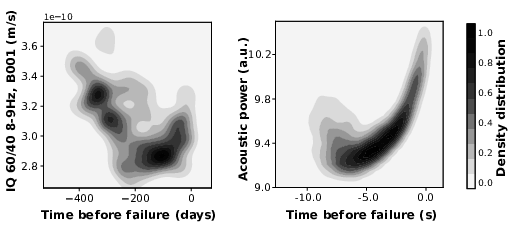Earthquake nucleation mechanisms remain debated, with two main hypotheses considered. The first hypothesis is the foreshock cascade, where each earthquake triggers the following one, until the main rupture occurs. In contrast, the second hypothesis suggests that earthquakes are triggered by precursory slow aseismic deformation. By analyzing continuous seismic waves and tremor activity, we provide evidence in favour of the aseismic nucleation hypothesis both for earthquakes and slow slips.
In a first analysis, we show that patterns in seismic energy identified by machine learning point towards small and slow displacement preceding slow slip rupture. We analyze over ten years of continuous seismic data in Cascadia, and show that slow slip failure is preceded by characteristic signals, small enough to not be captured in existing catalogs. Comparison with laboratory experiments suggest that these signals are generated by small-scale aseismic deformation, leading up to the rupture.
In another attempt to characterize aseismic nucleation, we developed a new methodology that allows us to identify and locate very small tremor events, even when they are below the noise level. We show that tremor activity can be spotted preceding large earthquakes.
Séminaire de Claudia HULBERT
15
April 2021
10h
Le séminaire sera en distanciel


